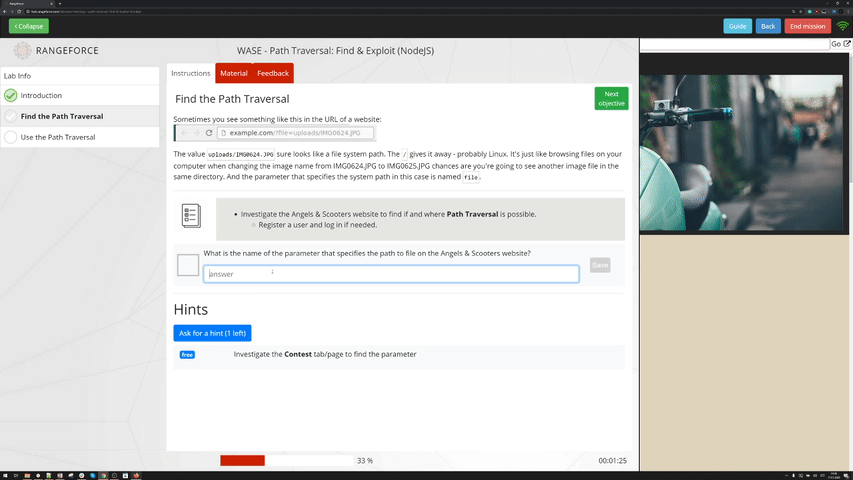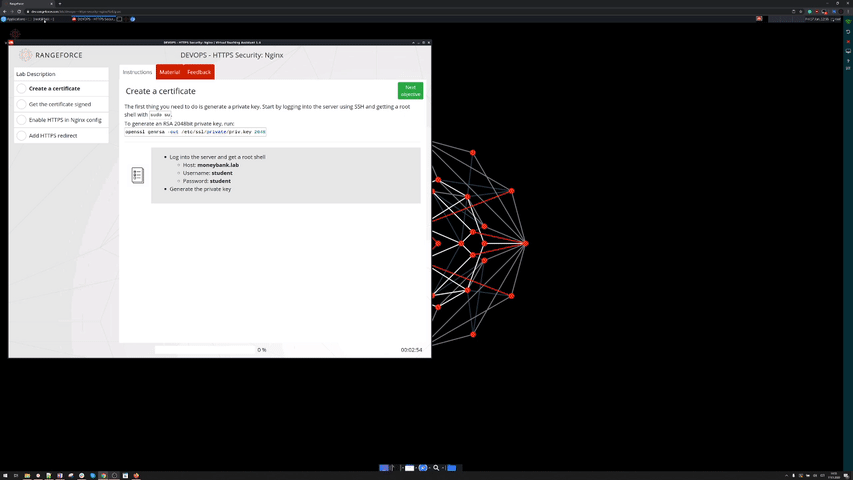On the RangeForce platform, there is an ever-growing amount of hands-on learning modules and challenges that teach you how to prepare, detect and respond to the latest cyber threats and system vulnerabilities. The best part is that it’s a cloud-based, on-demand, SaaS environment which means that no complex setup or hardware is required. You access everything through your web browser so a decent internet connection is all you need.
Learning Modules vs Challenges
There’s a big difference between the learning modules and challenges. The learning modules include reading material and hints to gradually help you understand the subject. The challenges, on the other hand, do not include learning material and have little to no hints. It wouldn’t be a challenge otherwise now, would it?
Both types of modules come in a variety of difficulty levels and usually include a story of some kind. For example, you might be given the character of Anders, a beginner security engineer who has to help out a friend whose little brother has fallen victim to command injection, or maybe you are tasked to use regular expression to help out your best friend Klaus, the Soundcloud rapper.
Module Formats
Depending on the subject and overall structure of the module, some look different than others. Fortunately, the Virtual Teaching Assistant looks the same in all of them. At the moment, these are the different types of modules:
- Desktop lab - you get access to a virtual desktop through the web browser. The desktop is yours to use however you please, as long as your objective is to complete the module.
- Microlab - you get access to some or all of the following: a web application to investigate or test attacks on; a command shell to access or change configuration on a server; or a code editor to fix any vulnerabilities in an application.
- Theory lab - you get access to the VTA only and the task mostly involves answering questions.
Making Progress
There are a bunch of ways to complete an objective. The most common way is to answer a question. The answer to the question may lie in the provided material or it could be a flag hidden in a file on a remote server. To get the flag, you might be required to use a specific security tool or exploit a known vulnerability. The possibilities are endless.

There are also objectives that can be completed without answering any questions. For example, your task can be to connect to a remote server and install some software on it. The automatic grading system will take care of verifying the result. It’s really cool!

Feedback
Giving feedback on a module will help the creators improve the modules and, in turn, enhance your learning experience. So, if you see something out of place or missing, or think that adding something new would make a module so much better, then let us know and we’ll make it happen!
Conclusion
It is really easy to get started on the RangeForce platform. All you need is a decent internet connection and you’re good to go. At first, it might look like a huge commitment and a time stealer but in reality, it isn’t. Most modules take from a half an hour to an hour to complete. So if you have an hour a week to level up, then why not give it a go?

